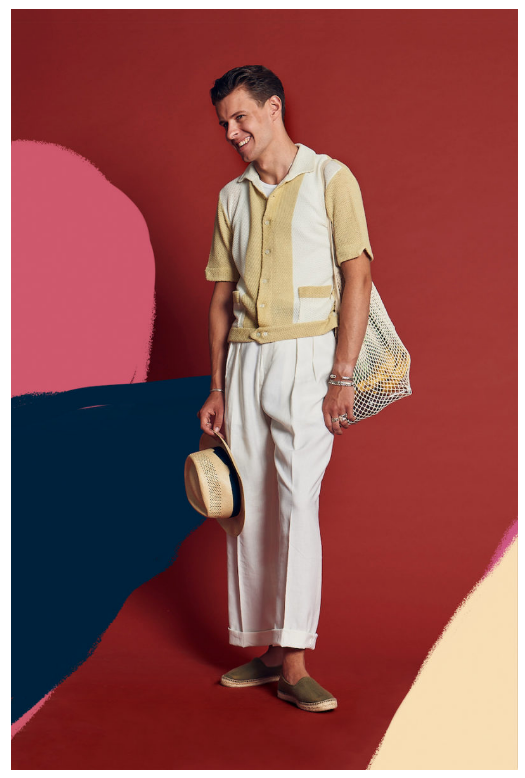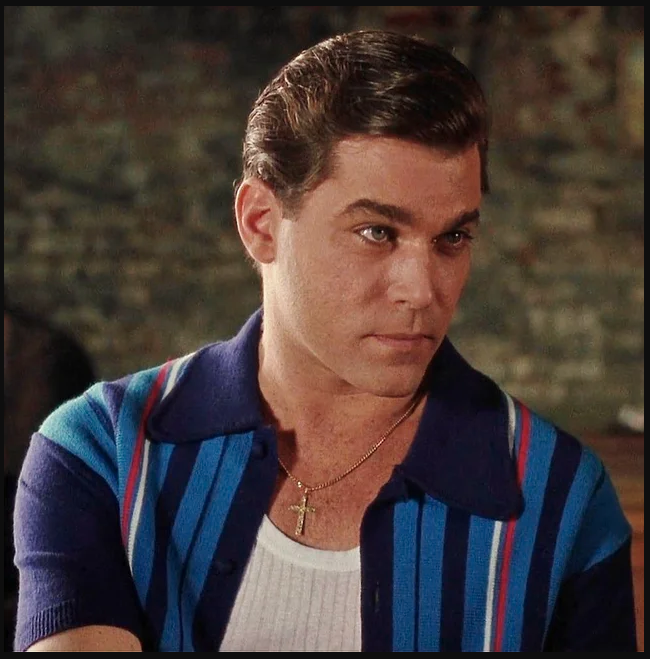IN CONVERSATION WITH SCOTT FRASER SIMPSON: FOUNDER OF THE SCOTT FRASER COLLECTION

Scott Fraser Collection (S.F.C.) is a menswear lifestyle and clothing brand, founded in London under the concept of Retrospective Modernism – the notion of keeping one eye on the past, but the other firmly set to the future.
As part of an interview for the From Tailors With Love podcast, Scott discussed the minutia of recreating iconic vintage knitwear from films such as The Talented Mr Ripley and Goodfellas. Below are some of the key moments transcribed from that interview.
Scott please introduce yourself and where does this passion for vintage knitwear stem from?
I'm Scott, I started the Scott Fraser Collection. I'm the founder and I wear all the hats. I started it back in 2013, it was very much like a sort of side project. My dad is a real sort of, do it yourself kind of guy. And he taught a lot of that to me as I was growing up. I started the brand in that way, you know. I was looking for a bag and I decided, well, I'm just going to make one. And I went out of my way looking to try to find the right makers or the right people to speak to about how you go about doing this. And from there, it's gone from that to the next product and the next project.
I've been doing it since 2013. It's a passion project that has been growing very organically into how I spend my time. Every single day. Every waking moment I am obsessing about clothes, and going down endless wormholes that keep on giving, undulating. So really, that's what the collection is about.
It's about deep dives into culture, from all eras really. We were very fixated on mid-century design and as the brand grew and developed, my influence has changed. That's where the net was cast wider. And with that came much more of an influence and much richer kind of content. So in a way I wanted it to encompass a multitude of things.
Can you touch upon the like the process like how you go about making these this knitwear?
Starting from the Ripley, that's the dawn really. At the beginning, I thought, Okay, this is what I need to create. To give a bit of context, I've been collecting these niche shirts, these kind of tops that have been coming from around sort of the mid 50s, through to kind of the mid 70s, early 80s. The glory Golden-Era was that mid 50s to mid 70s.
I've been collecting these sort of knits for a long time. I've amassed a collection of about 200 to 300 pieces. So for me, it's, I've been building this archive and shooting every single piece, colour profiling everything, taking all the details, and documenting them as a mark of respect. Which is a lot about what the brand is about.
A lot of these small minute details that are there for a reason, as part of functionality, just get eradicated because it's just superfluous in their mind. And a lot of the time, I want to make sure that you keep those things because they are the heritage of those of clothes. And the Ripley was the first one. It was one I'd never seen and never really understood where it had come from.
How nerdy are you on the details?
I'm pretty nerdy when it when it comes down to labels and who did what and so I'd never seen that top. Hopefully one day I'll find it along my travels. But it was a process. Basically I was already making knitwear. I went to the factory that I was working with. And I said, right. This is what I want to create. Here's a picture, here's a sketch. This is what I'm looking to do. I started picking out colour profiles, looking at different yarns, talking to them about the textures on the front panels. Of course I watched the film 1000s and 1000s of times about where it sits on the waist, how many buttons like the button positioning, etc. I thought, you know if I'm going to do this, I wanted to do it correctly. Do it justice and give it the respect that it deserves.
I know film companies are quite precious when it comes to intellectual property are you mindful with that sort of thing?
Totally, I mean you don't want to get a knock on the door. And especially as this is far reaching. I think it's important to be mindful that you know it's not just you, your crew and that circle. That if it's going much further and potentially the press, that kind of thing goes further. That you want to keep abreast of what could happen or what might happen. And it was all good. I've got a couple of friends who were lawyers, and they kind of went through it and, and the amount of time that's passed plus X, Y, and Z.
Those pieces that they we're using, were all vintage anyway. They would have been probably from the 50s or 60s. And a lot of that intellectual property has expired in those times. I've sort of signed and sealed it all up before I invest in it, because there's a lot of time that goes into developing these pieces, you know, it's a lot of a lot of back and forth.
What requests do you get normally? Scott?
I mean a mixture of things. Actually it's been hugely beneficial having people who are very much in the community. They want to share what you know, their enthusiasm. I was developing the Ripley, there was emails coming through, "hey, please, please, please, can you do this?" And then same with the Goodfellas. So it always is a great way to go, "Don't tell anyone, but we're doing it." But the third one. I'm still thinking about it really. There's development with the Icon Series. It doesn't always have to be a film. So it's from street scenes to the silver screen. There's a few kind of iconic pictures that I've always had on my mantel or made mood boards that I'm obsessed with. It could be just pieces of knitwear. It's finding the right places to make them as well because sometimes there'll be various different kind of technical details, and things like that.
And you managed to get hold of the originals?
There's one, which is the blue one, the short sleeve. The one he wears with a vest underneath. Now I sourced it through a New York costume house that was a contact that I made collecting through the years. You build up these frameworks of who's got what or who knows where things go and a lot of costume houses obviously buy tons of period clothing. I came across this knit through them. It doesn't have direct lineage.
But based on where it was, in New York. I feel like it had very strong links to the Idlewild. On the other hand, I have the same one, but it's in a different colour. So they are both vintage pieces. And I have the same one that is in a great shade of green. But then me being me, I know the maker. Even though the green one didn't have a label, I knew all the different marks that came from the specific brand that would have made it back in the day. So it's like really deep shit.
Were there any times where you thought like, I'd love to have this shirt, but with the sleeves of different lengths or different pockets space etc?
I think that's a really key point. I want to be screen accurate, but I also know that I'm making clothes for people for today. There will be the adjustments that I feel, that would make a better shirt. The vintage model of the Salerno, the blue one, the balance of the garment was extremely off. The front was hanging down really low. And the back is almost above your coccyx where it has kind of shrunk. It was actually a really awkward piece to wear. So we use the body shape that we know works. We've made sure that it kept that kind of like closeness to the arm elements that kept that look of it.
We didn't want to change it completely, but then also contemporize it to the point where we know that's going to work, but obviously not getting rid of the colours. The colours are what probably makes that piece that piece. We even died up the yarn for the blue, because I was struggling to find a blue that would even have a comparison. So there are always those tweaks. And I think it's important to if you're bringing something into a new generation or into the world again, you just recontextualize. I think the most important thing is to make it relevant for people today. It's kind of like genetic code, let's say, but just allowing a little bit more finesse.
Founder of this eponymous blog, focusing on men's fashion & lifestyle.









